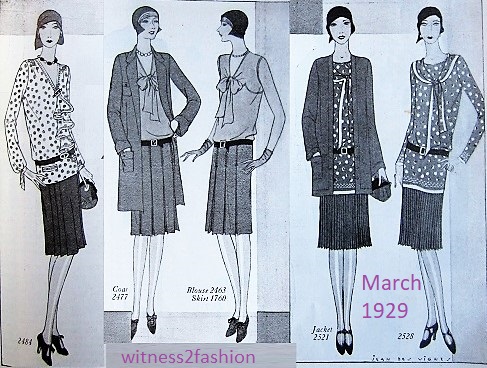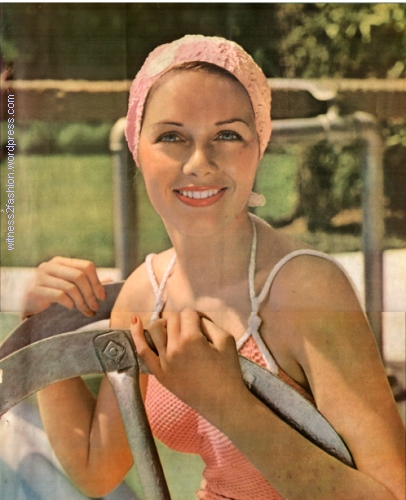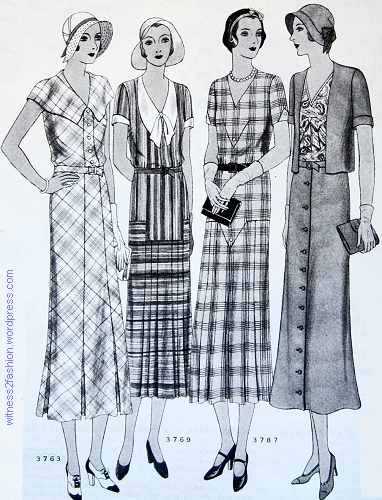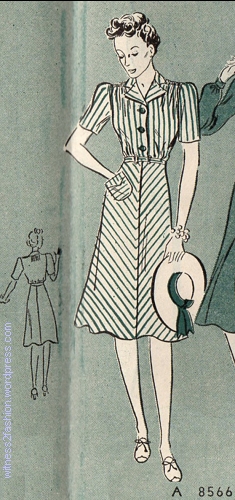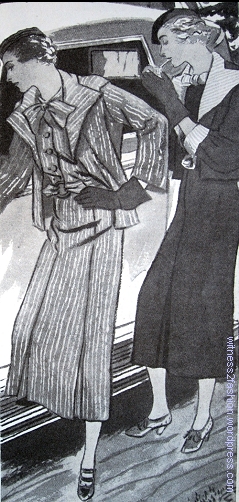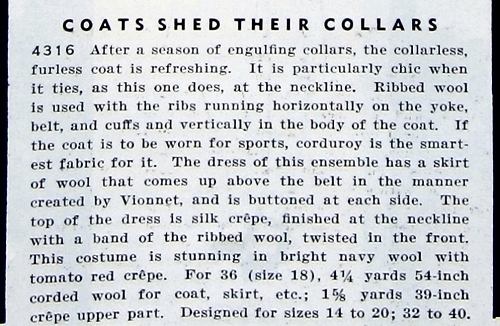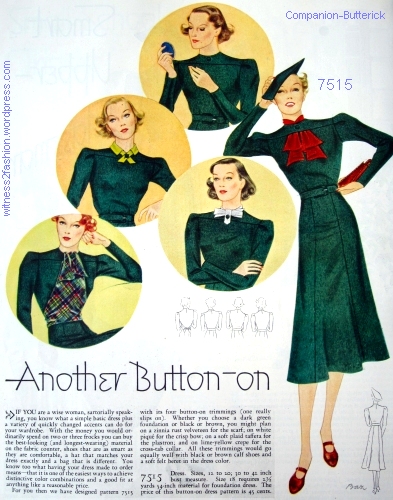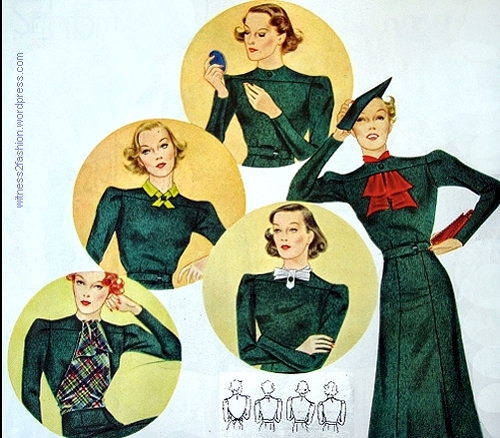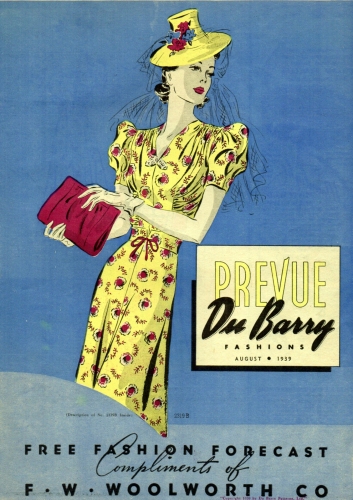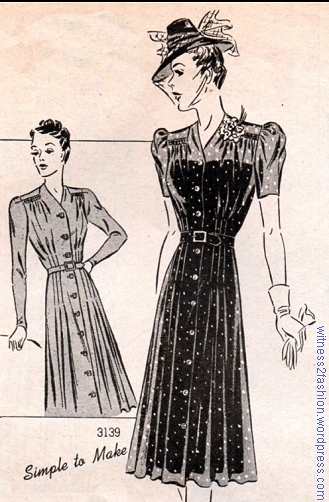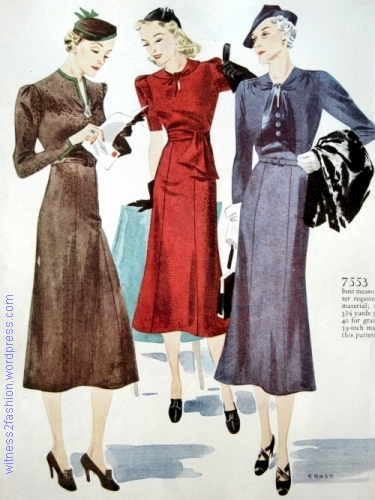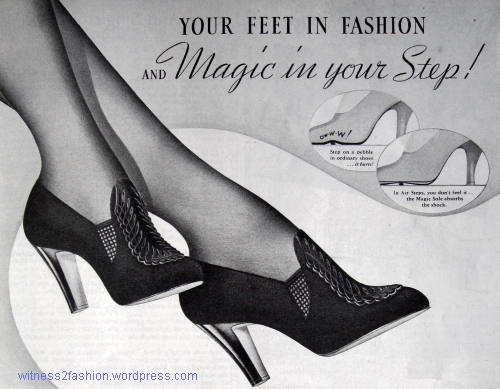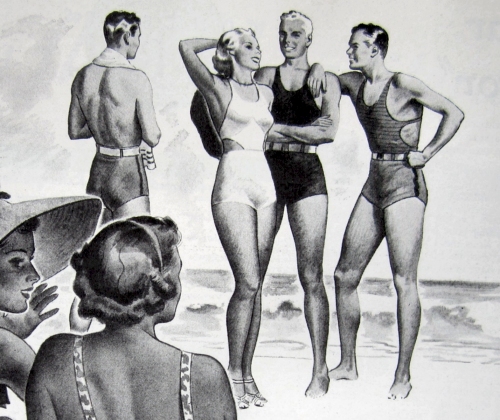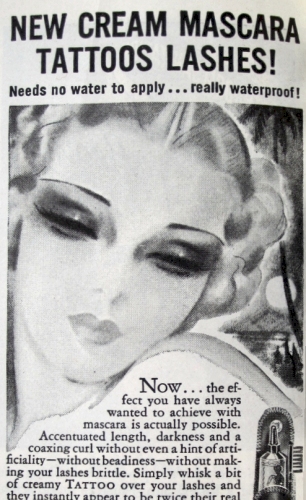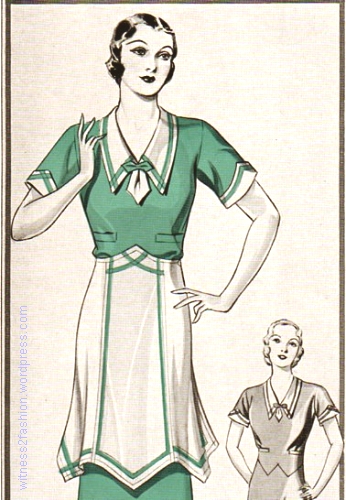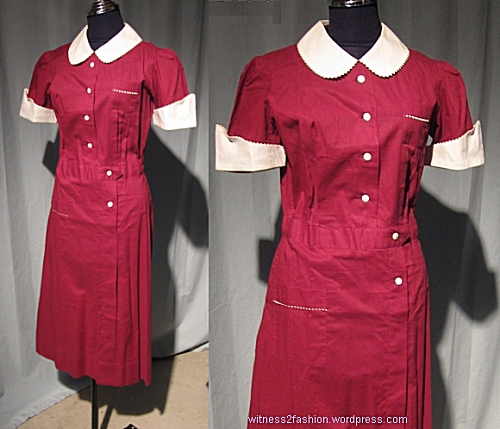
Each of these schoolgirls wears an outfit with matching jacket. Butterick patterns in Delineator, April 1930.
I’m struck by how grown up these schoolgirls would look in their suits. (Farther down, I’ll show school clothes for girls that really echoed the clothes women would have worn to the office.)

The alternate view, left, shows a miniature 1920’s cardigan suit. Butterick 3169 for girls 4 to 10.
The details of the sleeveless blouse are rather sophisticated. [I remember having to wear a skirt like this, held up by matching suspenders, in first grade…. It’s incredible that I once had no hips!]

Butterick 6135 is very like an adult’s dress, with a deep back tied with a bow. For ages 8 to 15. Delineator, April 1930.
If the little girl’s suit (3169 looked) “1920s,” clothes for her older sister (above) show the higher waist of the Thirties.
This little boy is too young to object to ruffles, according to the description, and the girl wears a 1920s’ style that still looks charming to me; it also suggests an outfit for the office, with its bib front and prim little bow!

Butterick patterns for children: 3150 and 3364 from August 1930, Delineator.
Some clothes really were child-sized copies of adult clothing:

The sleeveless dress with cape-collared jacket (3226) isn’t an exact copy of an adult style, but the jumper outfit (3234) is very similar to an adult version. Delineator, May 1930.

Butterick 3234 is for girls 8 to 15; Butterick 3239 is for women in a full range of sizes up to 44″ bust.

I wish this explained how you got into this top; the fitted waist, front and back, implies an opening somewhere. (Probably a side seam opening closed with snap fasteners.)
The coat shown below must have been out of the budget for most children’s wardrobes.

Butterick 3448 has a flared skirt; girls’ coat 3467 has a capelet and fur trim — very grown-up. October 1930.

Proportioned for girls 8 to 15, coat 3467 mimics the woman’s coat at right (Butterick 3491.) Both from autumn, 1930. Delineator.

From a page of fashions for working women [!] Delineator, October 1930. Right, women’s coat 3491.

Left, for girls 8 to 15, Butterick coat 3422 and dress 3414, from September 1930. Delineator. Even the little girl’s caped coat (3434) has a fur collar and capelet like 3491, above.
The dress above (3414) has a false bolero, just like the adult dress (3529) below:

Left, for girls 8 to 15; right, for women. Fall 1930, Delineator.

Left, a bolero jacket over a dress with a light-colored top. July 1930. Women wore them , too.


This bolero suit came in versions for very little girls and their bigger sisters. Delineator, August 1930.
(The girl’s skirt stays up because it is buttoned to the blouse, like the little boy’s outfit, below.)

Right, another bolero suit. The girl’s dress in the middle is quite a departure from the usual 1930’s styles for women, however. It pre-dates the Letty Lynton fad.
The image above is from a page of party fashions for girls; frilly dresses for little girls allowed for departures from the “miniature woman” look.

These party dresses for little girls (age 4 to 10) are nothing like the body-hugging adult fashions of the 1930s. Delineator, November, 1930.

For very young girls, a shapeless dress with fantasy trim (right, Butterick 3529.) Girls in their teens, however, might prefer to wear a dress with a waist — like 3532, in the middle. November 1930.

These dresses for girls from 8 to 15 look like 1920s’ styles, except that they are belted at the waist instead of the hip. Delineator, August 1930.
It’s almost a relief to see that girls were not necessarily expected to grow up overnight in 1930, although many must have joined the workforce in their early teens. [Depression Era film recommendation: Wild Boys of the Road, 1933 . Click here for Plot summary. A teen-aged girl is among the desperate children riding the rails. Louise Brooks made a similar picture in 1928, before the stock market crash: Beggars of Life.]

